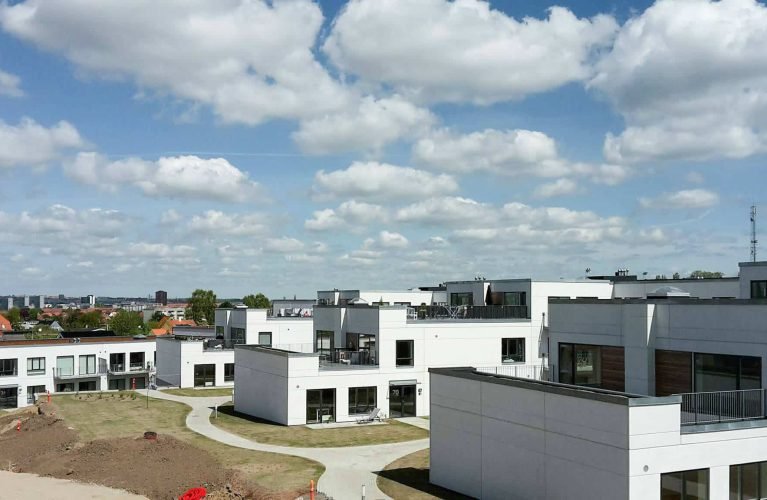
Stainless steel 347 pipe
-
What is the difference between SS 347 and 347H?
The primary distinction between ss 347 and 347H is that 347H has more carbon, which gives it better strength at high temperatures and makes it less likely to “creep.” 347 Also, 347H is more resistant to corrosion. Because of these variations, 347H is better suited for furnace components, heat transfer, and jet engine components, all of which are subject to extremely high temperatures.
Due to its higher carbon content, 347H generally has a greater minimum tensile strength & yield strength than its 347 counterparts. It increases its stress tolerance, allowing it to withstand more force before bending or breaking.
Moreover, 347 is considered a “general purpose” stainless steel, and 347H is considered a “special purpose” stainless steel. It is because 347H is only employed in specialized contexts that use its superior high-temperature strength & corrosion resistance. Both 347 and 347H resist oxidation and corrosion and are not magnetic. 347H is also resistant to stress corrosion cracking caused by polythionic acid.
-
How do you weld stainless steel 347 pipe?
When welding stainless steel 347 pipe, there are a few things to remember. Here are some tips when welding 347 stainless steel:
Thoroughly clean the pipe before welding: Cleaning the pipe of dirt, grease, or other trash is essential, as stainless steel is highly vulnerable to contamination.
Find the right filler metal and use it: When welding 347 stainless steel, it is essential to use a filler metal made of 347 stainless steel.
To preheat the pipe: The pipe can be protected from breaking and warping by heating it before welding. The optimal preheating range is between 65 and 93 degrees Celsius (about 150 to 200 degrees Fahrenheit).
Use the right welding technique: TIG or gas tungsten arc welding is a good option for stainless steel since it requires very little heat to join the metal. Make sure the filler metal is completely melted and spread out evenly.
Apply a cooling method: The pipe should be cooled down as soon as welding is complete to avoid damaging the stainless steel. A warping or breaking surface may be avoided in this way.
After-weld cleaning: Cleaning the pipe of any oxides or other impurities that may have been collected during welding is an essential step after welding is complete.
-
What is better, 347h stainless steel pipe or 347?
Stainless steel pipes are very popular because they last a long time and do not rust. Some things to note while deciding between 347 and 347H stainless steel pipe. When comparing the two, 347H stands out due to its superior strength and hardness. It enhances its usefulness in environments with higher temperatures and pressures.
In addition, 347H has improved heat resistance, making it suitable for boilers and other high-temperature industrial settings. The melting point of alloy 347H is 1,322 degrees Fahrenheit (726 degrees Celsius), while its boiling point is 3,109 degrees Fahrenheit (1,838 degrees Celsius). The tensile strength of 347H is more significant than 347.
347H is superior to 347 for high-temperature applications that demand enhanced resistance to stress and corrosion. At the same time, 347 is superior to 347H for general-purpose uses where corrosion resistance & high-temperature strength are not essential concerns.
-
Will SS 347h pipe rust in water?
Stainless steel 347H is resistant to rust & corrosion but isn’t highly resistant to them. However, stainless steel 347H is considered extremely rust and corrosion-resistant, even in water, under typical conditions.
The chromium in SS 347H creates a passive layer on its surface, preventing rust and corrosion. Rust and corrosion can form on stainless steel 347H pipe if the surface is scratched or if the pipe is exposed to strongly acidic or high-chloride situations.
Corrosion of stainless steel may also occur if the water contains substances like hydrochloric acid, sulfuric acid, or chlorides. If the water includes much oxygen, it could cause corrosion problems on the pipe’s surface.
Under typical conditions, ss 347H pipe will not rust or corrode, even when immersed in water. On the other hand, rust or corrosion can form if the surface is damaged or the material is subjected to highly acidic or high-chloride situations.
-
Is stainless steel 347 pipes imported into a turkey?
Pipes made of ss 347 are combined with iron, chromium, nickel, and molybdenum. Due to their high thermal strength and resistance to corrosion, they can be used in a variety of industrial & commercial settings.
Stainless steel 347 is ideal for high-temperature purposes, petrochemical and chemical processes, power generation, the food and pharmaceutical industries, and coastal and marine settings.
With the growth of international trade, importing stainless steel 347 into Turkey has become common. Multiple sectors use this steel grade, including the automotive, building, and industrial sectors. When importing stainless steel 347 into Turkey, it is vital to consider quality and price.










